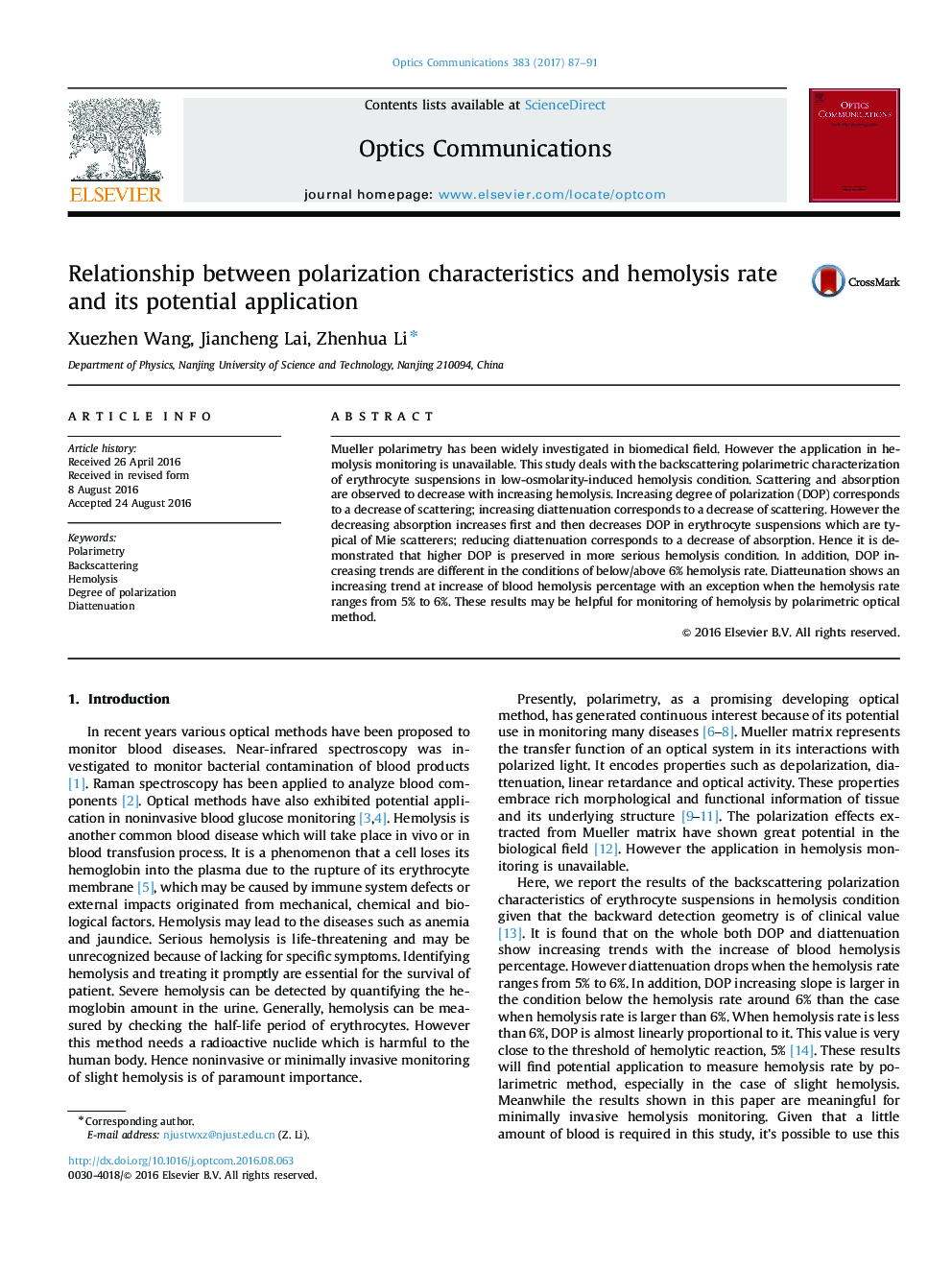| Article ID | Journal | Published Year | Pages | File Type |
|---|---|---|---|---|
| 7927249 | Optics Communications | 2017 | 5 Pages |
Abstract
Mueller polarimetry has been widely investigated in biomedical field. However the application in hemolysis monitoring is unavailable. This study deals with the backscattering polarimetric characterization of erythrocyte suspensions in low-osmolarity-induced hemolysis condition. Scattering and absorption are observed to decrease with increasing hemolysis. Increasing degree of polarization (DOP) corresponds to a decrease of scattering; increasing diattenuation corresponds to a decrease of scattering. However the decreasing absorption increases first and then decreases DOP in erythrocyte suspensions which are typical of Mie scatterers; reducing diattenuation corresponds to a decrease of absorption. Hence it is demonstrated that higher DOP is preserved in more serious hemolysis condition. In addition, DOP increasing trends are different in the conditions of below/above 6% hemolysis rate. Diatteunation shows an increasing trend at increase of blood hemolysis percentage with an exception when the hemolysis rate ranges from 5% to 6%. These results may be helpful for monitoring of hemolysis by polarimetric optical method.
Related Topics
Physical Sciences and Engineering
Materials Science
Electronic, Optical and Magnetic Materials
Authors
Xuezhen Wang, Jiancheng Lai, Zhenhua Li,
